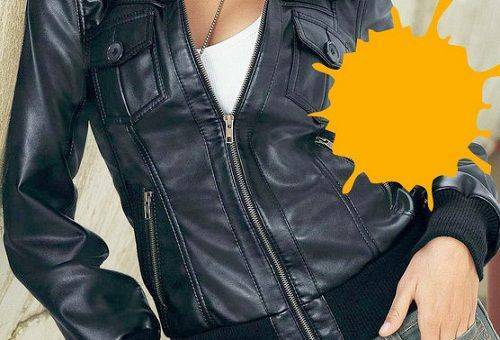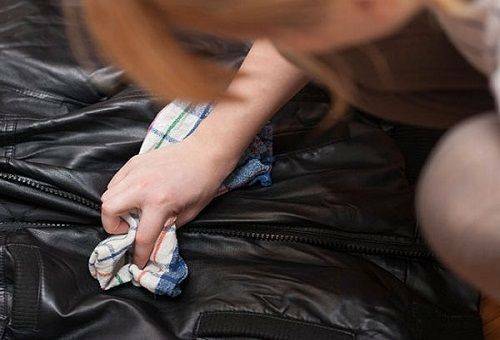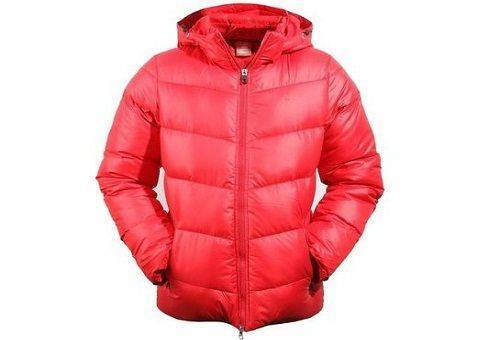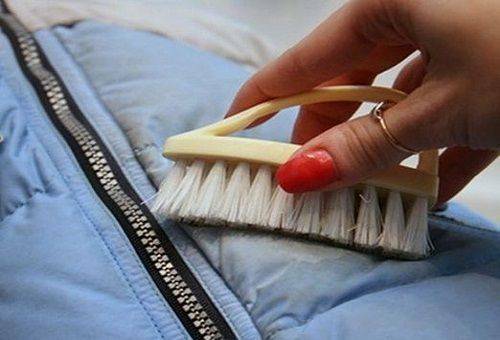In preparation for the cold months, the housewives take out suede, bolognese, downy and leather jackets from the cupboards, often revealing contaminated soils on their surfaces. Before you remove stains from a down jacket or other outerwear with the help of professionals from dry cleaning, you can try to cope with the problem yourself.

It is worth considering that after thorough washing such fatty formations can become even more obvious, therefore, it is necessary to approach the processing of products with the mind, adhering to a certain sequence of actions. First you need to get the best tool, based on the material and its features.
Options for impact on leather products
A greasy stain on the surface of a soft leather jacket looks awful, and after traditional washing it only smears or gives a few additional areas of contamination. If you act correctly, you can remove it quickly and without negative consequences for the material.

Tip: If the formation is completely fresh and has not managed to turn into a film, then it can be removed with damp and dry napkins. First we take a dry product and we soak the contaminated surface, repeating it several times until the napkin is clean. After that, take a wet napkin and remove the remaining contamination, moving from the periphery to the center.
To remove persistent grease stains from a leather jacket, you can use one of the following methods:
- Take a little corn or potato starch, dilute boiled water to the state of gruel. The resulting composition is spread very thinly over the surface of the stain and left for a few minutes. Fat should be completely absorbed into the starchy substance. Then remove the mass with a damp cloth and dry the product.
- Talcum, soda, baby powder, fine salt and chalk also perfectly absorb fat, but only if it is in liquid form. With the selected powder, sprinkle the affected area and wait for the crystals to soak the product. You can use steam or hot water to pre-melt the fat.
- With greasy stains at home, the household soap handles well. It can be used during or after washing. When working with the skin there are only two features: the use of hard brushes is forbidden, soap needs to be thoroughly washed, otherwise the surface will remain plaque.
- Spots on light skin can be removed with lemon juice. For dark and colored products, it is better to take onion juice. Just cut the selected product and conduct a cut several times on the spot. Remains of liquid are soaked with dry napkins.

The listed methods are not at all aggressive, but with the wrong approach or abuse of compounds and they are able to spoil the material. If the product is expensive, it is best to start with normal washing and, if necessary, contact a specialist.
How can I quickly and safely clean a bolone jacket or down jacket?
Down and bolognese jackets are often salted during storage, and the characteristic greasy stains do not go away after traditional washing, but become even more noticeable. Today there are several people's approaches that can get rid of the problem in the shortest possible time.

If you can not wash the contamination, then use one of the following options:
- Tablespoon of detergent according to the color of the product is bred in half a liter of warm water. The resulting liquid is applied to the stain so that it is soaked through. If possible, then you need to provide access to the fabric from two sides. In this case, we act on the wrong side, paving the "face" with a soft flap. After a few minutes, we perform the treatment with a soft brush or sponge. After that, the fabric is soaked with a cotton swab dipped in vinegar. Then we erase the product and then evaluate the results of washing.
- The use of such finished products as "Antipyatin" and "Lok" gives good effect. We apply them according to the instructions, not exceeding the recommended exposure time.
- Greasy stains from a down or bolognese jacket can be removed with tooth powder. We take a little powder, we put it on the stain and slightly rub it with a soft-nosed brush. If the fat is old, then apply a little water on the formula. Then we put a sheet of white paper on the treated area, which is pressed with a heavy iron. A day later we dismantle the structure and clean the remains of the powder. After that, remove the minor stains with traditional washing.

The effectiveness of these approaches in the fight against perennial spots is very doubtful. In such cases, it is necessary to use solvents, but they can adversely affect the structure of the material.
